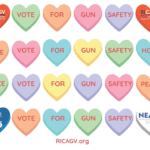The Era of Progress on Gun Mortality: State Gun Regulations and Gun Deaths from 1991 to 2016
By: Patrick Sharkey, Megan Kang
National Library of Science. Published November 1 st, 2023.
Abstract
Background: The recent rise of gun violence may lead to the perception that the problem of gun mortality in the United States is intractable. This article provides evidence to counter this perception by bringing attention to the period spanning from 1991 to 2016 when most US states implemented more restrictive gun laws. Over this period, the United States experienced a decline in household gun ownership, and gun-related deaths fell sharply.
Methods: The main analysis examines the conditional association between the change in gun regulations at the state level and the change in gun mortality from 1991 to 2016. We include a range of robustness checks and two instrumental variable analyses to allow for stronger causal inferences.
Results: We find strong, consistent evidence supporting the hypothesis that restrictive state gun policies reduce overall gun deaths, homicides committed with a gun, and suicides committed with a gun. Each additional restrictive gun regulation a given state passed from 1991 to 2016 was associated with -0.21 (95% confidence interval = -0.33, -0.08) gun deaths per 100,000 residents. Further, we find that specific policies, such as background checks and waiting periods for gun purchases, were associated with lower overall gun death rates, gun homicide rates, and gun suicide rates.
Conclusion: State regulations passed from 1991 to 2016 were associated with substantial reductions in gun mortality. We estimate that restrictive state gun policies passed in 40 states from 1991 to 2016 averted 4297 gun deaths in 2016 alone, or roughly 11% of the total gun deaths that year.
Source: https://pubmed.ncbi.nlm.nih.gov/37732847/
Copyright © 2023 Wolters Kluwer Health, Inc. All rights reserved.









